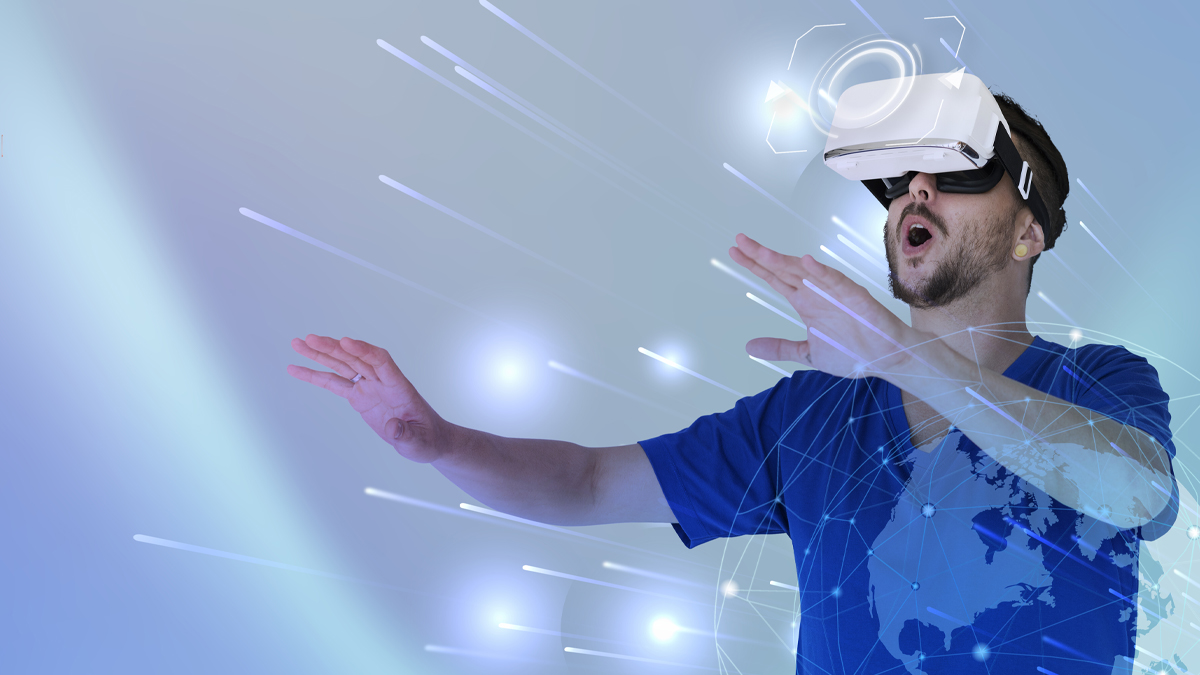What is Virtual Reality?
Virtual Reality (VR) is a technology that creates a three-dimensional, computer-generated environment. When you wear a VR headset, you feel as if you are inside a different world, either that is a mountain top, an alien planet, or a concert stage. VR systems track your head and hand movements, adjusting the view and interactions in real time. This immersive experience tricks your senses, especially sight and sound, into believing you are somewhere else. In the music industry, VR offers artists and fans a new way to connect beyond traditional audio and video formats.
| Table of Contents | |
|---|---|
| I. | What is Virtual Reality? |
| II. | How VR Works in Music? |
| III. | How VR Works Generally? |
| IV. | Applications of Virtual Reality in Music |
How VR Works in Music?
In the music industry, VR combines high-quality audio with immersive visuals to create concerts, music videos, and interactive experiences:
- Virtual Concerts: Fans don VR headsets to attend live shows in a virtual stadium. They can look around, move to different seats, and even interact with other virtual attendees.
- 3D Music Videos: Artists produce videos where every direction you look reveals new visual details synced to the song. Viewers explore the scene at their own pace.
- Interactive Installations: In galleries or at festivals, VR booths let users manipulate sound elements like turning knobs or pulling levers to remix tracks in real time.
By blending visuals and spatial audio (sound that comes from specific directions), VR in music makes listeners feel like active participants rather than passive watchers.
How VR Works Generally?
At its core, a VR system has three main parts:
- Display: A headset with two small screens (one per eye) shows slightly different images to create depth perception.
- Tracking: Sensors in the headset and controllers detect your head, hand, and sometimes body movements. This data feeds back to the computer so the virtual world shifts as you move.
- Computer Graphics and Audio: A powerful computer or gaming console renders the virtual scene and processes 3D audio. Spatial audio is essential in VR it simulates how sounds change depending on your position and head orientation.
Together, these components create a seamless loop: you move, the system tracks you, the visuals and sounds update, and you continue exploring the virtual space.
Applications of Virtual Reality in Music
- Global Concert Access: Artists can perform in VR for fans anywhere in the world, lowering travel costs and reaching new audiences. A fan in Tokyo can enjoy the same front-row view as someone in New York.
- Immersive Music Videos: VR music videos allow for storytelling that unfolds around the viewer. Fans can explore hidden easter eggs and visual surprises integrated with the song.
- Music Education and Training: VR classrooms let students attend masterclasses from top musicians in a virtual studio. Interactive tools can visualize music theory concepts in 3D, making learning more engaging.
- Therapeutic and Wellness Experiences: VR soundscapes can be used for relaxation, meditation, or therapy. By immersing users in calming visual and auditory environments, music-driven VR helps reduce stress and improve mental health.
- Collaborative Creation: Musicians in different locations can meet in a shared virtual studio. They can see virtual instruments, adjust controls in mid-air, and co-create tracks as if they were in the same room.
As VR technology becomes more affordable and accessible, its use in music will continue to grow, offering richer, more interactive experiences for both artists and fans.

